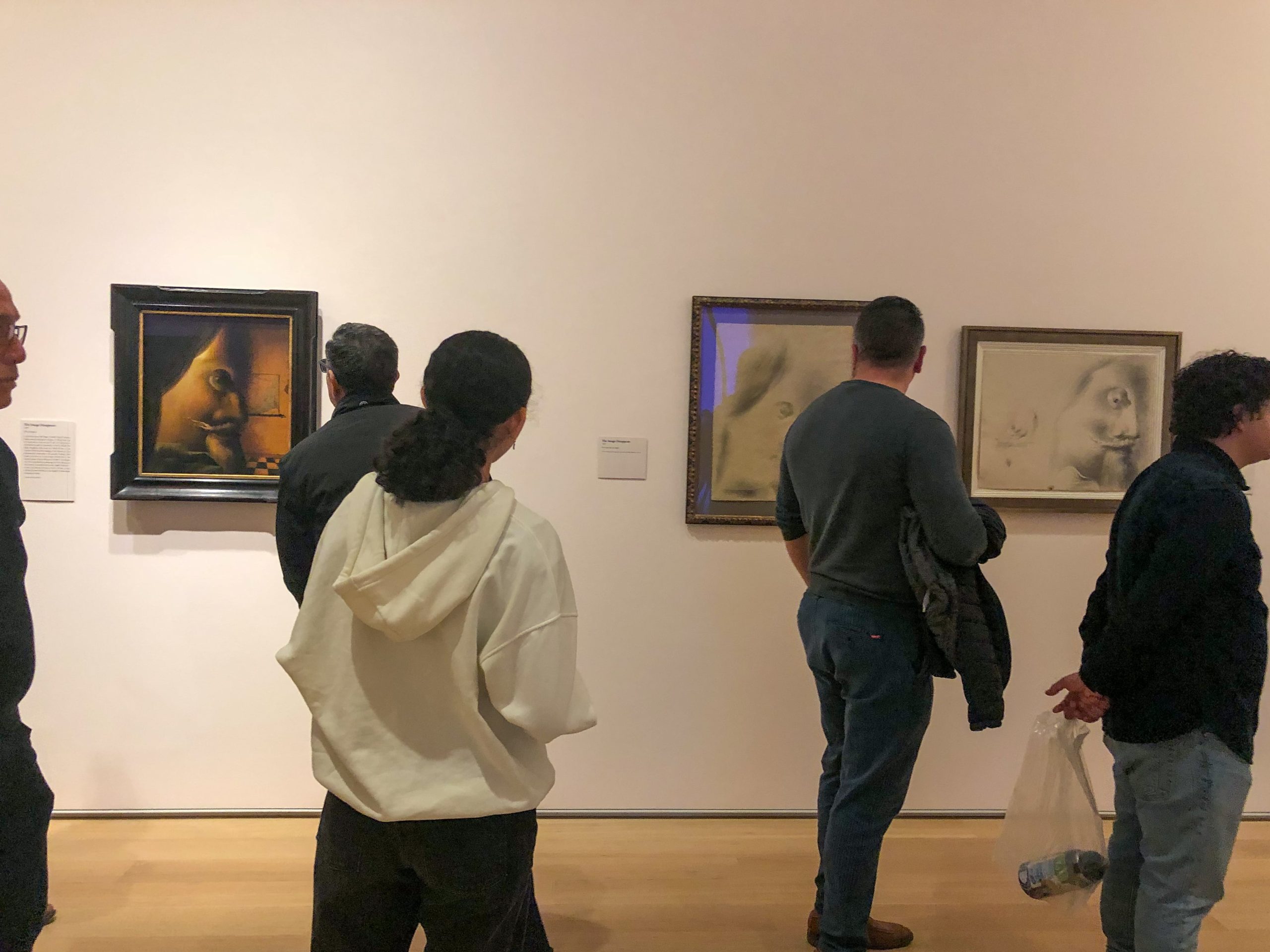The first impression of “Salvador Dalí: The Image Disappears” at the Art Institute of Chicago is fairly surreal itself. On the wall leading up to the entrance is a blown-up image pulled from Dalí’s pamphlet “Declaration of the Independence of the Imagination and the Rights of Man to His Own Madness,” immediately establishing the offbeat and fascinating aesthetic and messaging of the artist.
The exhibition “explores two defining, contradictory impulses: an immense desire for visibility and urge to disappear.” The accompanying works are thoughtfully selected and provide insight into Dalí’s signature style of exploration, transformation, interruption, and contradiction.
Upon entering, the viewer is greeted with three paragraphs and a quote from Dalí, setting up for what turns out to be a very wordy exhibit. The exhibit is relatively small for such a renowned artist and can end up getting crowded. The light pink walls create a dreamlike effect, and there’s an arch that has been built into the wall of the third room, perfectly positioned so that when the viewer turns away from it, they immediately see a very similar arch in Dalí’s “Visions of Eternity”.
Featured in the exhibit are paintings, photographs, drawings and more. Additionally, frequent examples are shown of Dalí exploring different versions of similar ideas. Near “Venus de Milo with Drawers”, a half-size plaster recreation of the famous marble statue altered with pom-pom-decorated drawers throughout the figure’s body, is “City of Drawers”, a similar graphite drawing from the same year of a woman with a drawer-filled torso.
While admiring the sculpture “Surrealist Object Functioning Symbolically”, the large title card describing Dalí’s exact objectives behind the creation of it easily draws the attention of the viewer. It’s a strange choice to explain a piece so thoroughly in a title card, thus not allowing the viewer to form their own interpretation of the piece. In fact, this pattern continues everywhere throughout the exhibit. Most pieces are accompanied by a large title card, explaining the exact meaning of the piece and why it was created. This can be seen in the card for “Autumnal Cannibalism”, where overeager curators strike again — what could have been a brief explanation that this painting is a metaphor for the Spanish Civil War becomes a commentary on Dalí’s centrist beliefs as compared to his Surrealist peers.
Though some people may appreciate the extra knowledge about a piece’s purpose, for many it detracts from the experience. One of the best things about Surrealism, and maybe art in general, is the opportunity for the audience’s experiences to shape their interpretations. The lack of mystery, or the ability to form one’s own interpretation of a piece, becomes a little disappointing. It would be nice to be able to reflect on the artwork without such detailed explanations.
While the sheer amount of information provided about Salvador Dalí is an admirable attempt to explain why he’s renowned, it does make it difficult for the audience to form their own opinion of his artwork. It’s an interesting exhibit, but perhaps too wordy to allow the viewer to appreciate Dalí’s artwork on its own.
















Be First to Comment